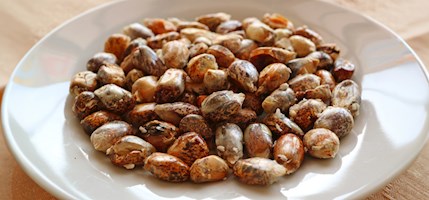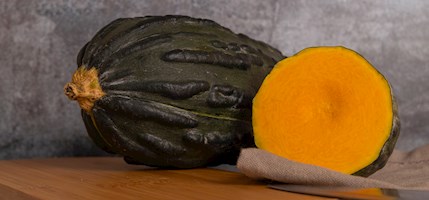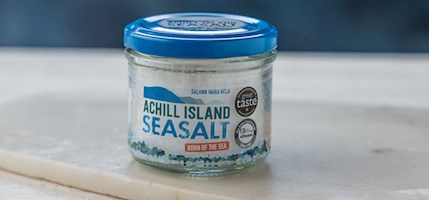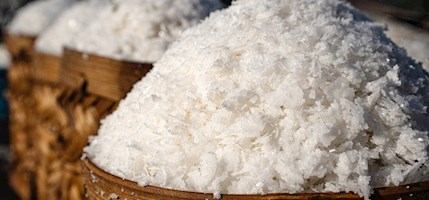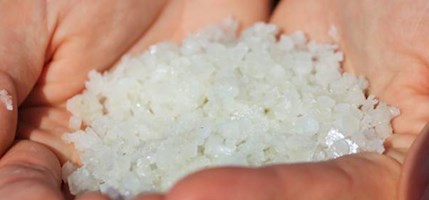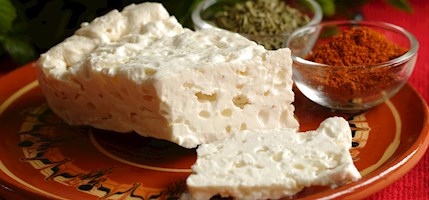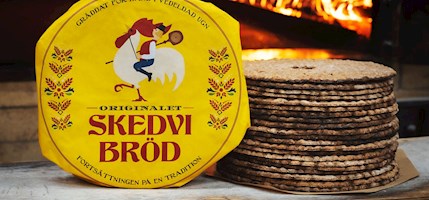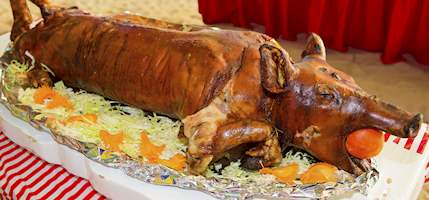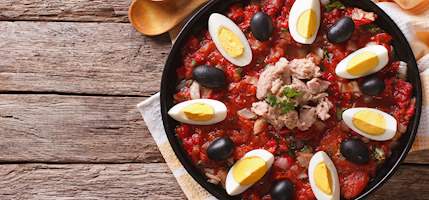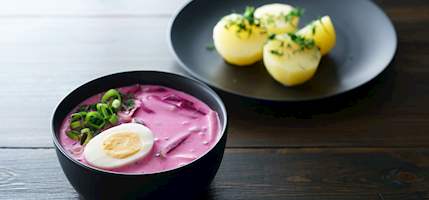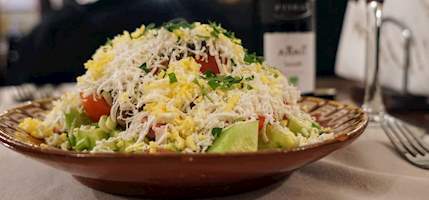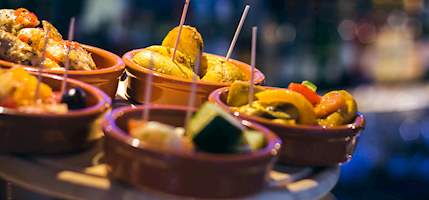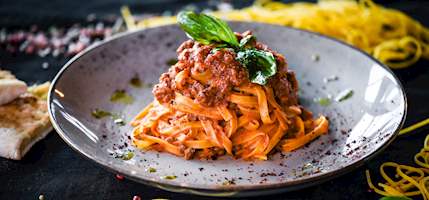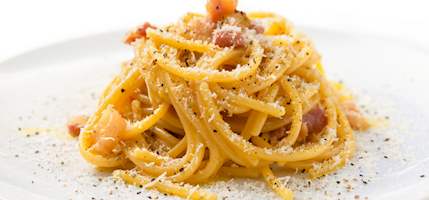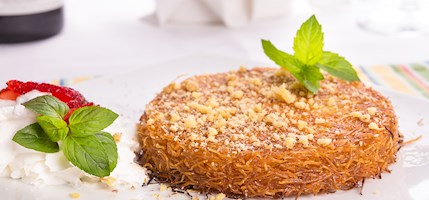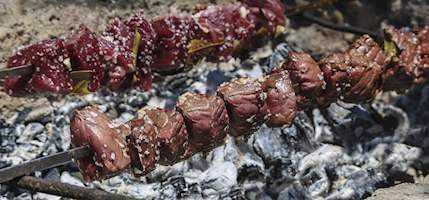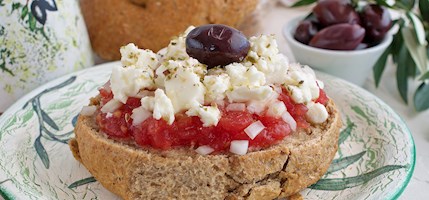Gemischter Satz
Gemischter Satz, rooted in Austrian viticulture (particularly within Vienna's wine region), is a distinctive wine defined by its blend of grape varieties. Unlike the modern trend of cultivating and producing single-varietal wines, this traditional approach intermingles different grape types in one vineyard. When the harvest season arrives, these varied grapes are plucked collectively and then co-fermented, leading to the creation of this multifaceted wine. The practice of growing multiple grape varieties together harks back to a time when diversifying crops was a hedge against potential loss. If one variety failed due to weather conditions or disease, the others might still thrive. The wine's character is shaped by the combination of grape varieties that go into its making. This interaction often leads to a wine with layered nuances and depth, a reflection of each contributing grape. The specific varieties can vary, but Grüner Veltliner, Riesling, Pinot Blanc, Traminer, Rotgipfler, and Zierfandler are some of the most common ones. The co-harvesting and co-fermentation processes are crucial. While blending different grape varieties post-fermentation can yield interesting results, Gemischter Satz's character emerges from fermenting these grapes together, intertwining their profiles from the very beginning. Understanding its unique contribution to the world of wines, Austria recognized Gemischter Satz with a DAC (Districtus Austriae Controllatus) designation in 2013. This label assures adherence to quality and origin standards, preserving the wine's legacy.
Maíz chulpe
Maíz chulpe is a specific variety of corn native to the Andes, particularly prevalent in countries of Peru, Colombia, and Ecuador. Many farmers have lost interest in cultivating it due to its high maintenance. It must be isolated from other corn varieties to prevent cross-pollination, which would alter its unique characteristics. That is why, in 2015, the Guardianes network initiated a campaign to preserve the endangered chulpe corn and restore its former prominence in cuisine. Maíz chulpe is almost exclusively prepared toasted, similar to popcorn. When the kernels of maíz chulpe are toasted, they pop slightly, but unlike typical popcorn, they don't turn inside out. Instead, the kernels retain their shape, puffing up a bit and becoming crunchy. The unique crunch and flavor of chulpe make it distinct from other toasted corn varieties like cancha.
Loche de Lambayeque
Loche de Lambayeque refers to a particular type of squash, loche, that is native to the Lambayeque region in northern Peru, and archaeological evidence suggests that loche has been cultivated in the coastal valleys of northern Peru for up to 6,000 years. Loche is a type of winter squash, somewhat similar in appearance to butternut or acorn squash. However, its flesh is softer and has a richer flavor. It has a beige or pale yellow color on the outside, while its interior is a vibrant yellow-orange. It is prized for its creamy texture and sweet, nutty flavor. Loche is versatile and can be used in both savory and sweet preparations. In northern Peru, especially in the Lambayeque region, it's commonly used in traditional dishes such as sopa de loche and arroz con loche. It can also be incorporated into desserts, puddings, and even beverages.
Carachama
Carachama (lat. Pseudorinelepis genibarbis) is a type of armored catfish native to the freshwater rivers and streams of the Amazon basin in South America. These fish are characterized by their bony plates, which cover much of their body, and by their bottom-dwelling habits. In the culinary context, especially in the Amazonian regions of countries like Peru and Brazil, carachama is a staple. It's frequently used in traditional dishes, such as soups and stews. Beyond its culinary usage, the carachama also plays a role in the local ecosystems. As a bottom feeder, it helps control populations of certain microorganisms and contributes to the health and balance of its aquatic environment.
Achill Island sea salt
Achill Island sea salt, naturally harvested from Ireland's Achill Island in the Atlantic Ocean, is a consistent, high-quality product thanks to controlled production steps on the island, involving harvesting, evaporation, crystallization, and drying. The salt's production is intimately linked to the area's geography, benefiting from the Atlantic Ocean's high salinity and Grade A Shellfish Quality waters, unaffected by urban pollution, ensuring the salt's unique flavor and purity. The production method preserves over 20 naturally occurring trace elements, contributing to the salt's distinct texture and taste, with no additives or preservatives added. Historically, salt production on Achill Island dates back to the late 1800s, when it was integral to the local fishing community for preservation and sustenance, marking a tradition that informs the current high-standard production process.
Garam Amed Bali
Garam Amed Bali is hand-harvested, unrefined, and free from additives sea salt from Amed on the Indonesian island of Bali. Garam Amed Bali consists of cube and tetragonal-shaped crystals and is white, shiny, and savory with a unique old wood fragrance. It is unrefined, unwashed, and additive-free, characterized by a crunchy and crispy texture. Bunga Garam Amed Bali features light and fine salt flakes that dissolve easily, ideal for use as table salt. Both salts have a strong saltiness without bitterness and share a similar mineral composition, including high sodium chloride content and trace minerals like copper and magnesium.
Sel de l'Ile de Ré
Sel de l’Île de Ré, and its premium counterpart, fleur de sel de l’Île de Ré', is salt harvested using traditional, centuries-old techniques. These salts are known for their unique coloration, from grey to white with possible yellow to red hues, and for their cubic crystal shape. They are not washed or enriched, preserving their natural characteristics. The production benefits from the island's specific mesoclimate, meaning the evaporation rates are high due to ample sunshine and sea breezes. Because it's hand-harvested, the salt has diverse grain sizes. The Île de Ré's salt marshes were developed in the 12th century and are integral to the island's landscape and economy.
Asín tibuok
Asín tibuok is a rare and traditional Filipino artisanal sea salt produced by the Boholano people. The appearance of asín tibuok is quite unique, often compared to a dinosaur egg due to its shape and texture. The method used for its preservation and creation dates back to before the Spanish Colonization of the Philippines over 500 years ago. The seawater is filtered through ashes, which gives it a distinctive flavor profile that is sharp, earthy, and has mild smoky undertones. Asinderos, or the group of salt makers, recognize that the asín tibuok is ready when the clay pot used in the production cracks to reveal the round bottom of the salt, which at this point, has solidified and filled the pot. It can then be broken into chunks and grated over food. The salt is known to turn pinkish in color due to the intense heat during its production process, but it turns white when washed with water. Its texture is described as smooth, with small granules.
Bulgarsko byalo salamureno sirene
Bulgarsko byalo salamureno sirene is a soft cheese unique to Bulgaria due to a specific lactose-tolerant bacteria used in its production process. This bacteria plays a role in converting milk into yogurt and then into sirene cheese. It is a fermented dairy product that can be made from full-fat cow's, sheep's, goat's, buffalo's, or mixed milk. It includes added yeasts containing strains such as Lactococcus lactis subsp. lactis and Lactobacillus casei, and symbiotic yeasts from Lactobacillus delbrueckii subsp. bulgaricus. Bulgarsko byalo salamureno sirene is slightly crumbly and has a dry matter content of at least 46–48%. In 2023, it was recognized with a Protected Designation of Origin (PDO) status by the European Union, which means that the name is reserved exclusively for cheese produced in Bulgaria using traditional methods.
Skedvi Bröd
Skedvi Bröd is a traditional Swedish crispbread, known for its distinctive taste and texture. Originating from the region of Dalarna in Sweden, this crispbread is made from simple ingredients, primarily whole grain rye flour. The dough is typically rolled out thinly and then baked on a griddle, resulting in flat, hard bread with a distinctive crispiness. The process of making Skedvi Bröd often involves using a special rolling pin with deep grooves, which creates a unique pattern on the bread. This pattern not only gives skedvi bröd its characteristic appearance but also helps in cooking it evenly. The bread is usually circular and can vary in size. Skedvi bröd is often enjoyed as part of a traditional Swedish meal or snack. It can be eaten plain, or topped with various spreads, cheese, or cold cuts. Its crunchy texture and wholesome rye flavor make it a popular choice for those looking for a hearty, rustic bread option.
Lechon
Lechon, derived from a Spanish word for roasted suckling pig is one of the most popular dishes in the Philippines. The slowly-roasted suckling pig is usually stuffed with lemongrass, tamarind, garlic, onions, and chives, and is then roasted on a large bamboo spit over an open fire. It is traditionally served whole on a platter, at celebrations and festive events such as weddings and Christmas. Once the meat is properly roasted and falls off the bone, people tend to eat every part of the pig, and the crispy, reddish-brown, crackling skin is especially beloved. Lechon is often served with a thick and rich liver sauce that is cooked with sugar, fresh herbs, and vinegar. If anything is left after the feast, the leftovers are often made into lechon slaw, slowly cooked with vinegar, garlic, and liver sauce for that extra bit of flavor. Apart from the Philippines, the dish is especially popular in countries such as Cuba, Puerto Rico, the Dominican Republic, and Spain. Some famous chefs even named lechon the best pig in the world, so it is definitely worth a try.
Space Cake
ALTHOUGH THERE ARE CLAIMS THAT EATING SPACE CAKES CAN LEAD TO PSYCHOSIS OR PSYCHOSIS SYMPTOMS FOR SOME PEOPLE, THERE'S STILL NOT ENOUGH CONCLUSIVE SCIENTIFIC EVIDENCE TO SUPPORT THEM. Originating from Amsterdam, space cake is a notorious delicacy that belongs to a group of cannabis-infused edibles. Variations on this specialty abound, and any baked good that contains cannabis butter may be called a space cake. This Dutch specialty is usually prepared with typical cake ingredients such as flour, sugar, baking powder, butter, milk, and eggs, which are combined with a certain quantity of cannabis. A great variety of ingredients can be added to the base to enrich the cake, including cocoa powder, chocolate drops, dried fruit, buttercream, vanilla, or various spices, and the baked cakes often come dusted with powdered sugar, glazed, soaked in rum, or stuffed with cream or custard. As with other cannabis intake methods, the consumption of cannabis in the form of space cakes also provides psychotropic effects upon its consumers due to the presence of THC (tetrahydrocannabinol) and other compounds. In the case of space cakes, the effects are usually prolonged and much stronger, and consumers typically feel high within 3 hours from the consumption. Space cakes with different shapes, flavors, and varying strengths can be savored at nearly any coffee shop in Amsterdam and they’re typically enjoyed alongside a cup of coffee, herbal tea, or beer. When it comes to the legal status of these cakes in the Netherlands, the country’s court allows the sale only of those cakes that are made with crushed weed.
Mechouia Salad
Mechouia is a Tunisian salad made with grilled, coarsely chopped onions, peppers, tomatoes, and garlic, drizzled with olive oil and seasoned with caraway, salt, and black pepper. The salad is then typically garnished with hard-boiled eggs, olives, or tuna. The salad can be served on its own, but it is also often served on toasted bread or baguette slices. It is quite common to find it in Tunisia as a part of a mix of appetizers in traditional restaurants.
Šaltibarščiai
This refreshing, cold beetroot soup is a part of traditional Lithuanian cuisine. It consists of a creamy blend of pickled or boiled beetroots and tangy kefir or buttermilk, poured over grated cucumbers and hard-boiled eggs. The whole soup is generously seasoned with dill, and usually left to set until all the flavors are thoroughly combined. It is usually prepared in the summertime, and is best served chilled, preferably with potatoes on the side. It can be enjoyed as an appetizer or a light main course.
Ovcharska salata
Ovcharska salata is a simple variation of the famous Shopska salata. Essentially, it is Shopska salata (cucumbers, tomatoes, onions, peppers, and cheese) with the addition of mushrooms, eggs, and ham. The salad is typically tossed with vegetable oil, left to rest for a few minutes, and it is then ready for consumption. It is especially popular in summer due to its refreshing flavors and the usage of seasonal vegetables.
Lasagne alla Bolognese
This rich and filling piatto unico (lit. single plate; one-dish meal) is traditionally made from layers of homemade, typically spinach-flavored fresh egg lasagna pasta that is topped with béchamel sauce and a rich meat sauce called ragù alla Bolognese. Lastly, lasagne alla Bolognese is generously sprinkled with the Emilian king of cheeses, Parmigiano-Reggiano, and baked until tender on the inside with a perfectly crisp, browned top. This oven-baked classic is a typical dish of the Emilia-Romagna region, and of the city of Bologna specifically. However, it has become so popular over time that it now enjoys a position as a worldwide symbol of Italian cuisine. Unfortunately, as is often the case with timeless dishes, changes to the original recipe or the substitution of lower-quality ingredients cause many renditions of lasagne alla Bolognese that fail to live up to the splendor of the original. Interestingly enough, in many bolognese households, there is a special deep oven casserole with handles called ruola, made of aluminum and used for baking lasagne alla bolognese.
Tapas
Popularly known as Spain's greatest food invention, these small finger foods are usually accompanied by a few drinks at lunchtime or in the early evening, led by the philosophy "eat when you drink, drink when you eat." The name originates from the Spanish verb tapar, which means to cover, and the dish stems from the region of Andalusia where drinkers would cover their glasses with slices of bread or meat to keep out the dust and flies. Today, the popularity of tapas has brought them across the borders of Spain, and tapas bars can now be found in nearly every developed country. Classic tapas were all about shellfish, originally consisting of a few olives, mussels, or anchovies served on a tiny plate. Today, however there is no end to the variety in modern tapas, which can be assembled from almost any type of ingredient served in small portions, with virtually no rules as to what goes with what. In southern Spain, tapas include shellfish, squid, eggs, shrimp, mixed breaded seafood, and fried fish marinated in saffron. Tapas in the north often consist of béchamel-based croquettes and battered prawns, while Madrid loves tripe, anchovies cured in vinegar, and ham tapas. Other common varieties include olives, meatballs, stuffed mussels, green peppers, cured cheeses, and thinly sliced salted cod. Regardless of the variety, tapas are a staple in Spain, amazing bar food worldwide, a way of eating, and a way of living.
Tagliatelle al ragù alla Bolognese
Tagliatelle al ragù alla Bolognese is a traditional Italian dish originating from Bologna, consisting of tagliatelle pasta and a rich ragù made with a mixture of minced beef and pork, and tomatoes as key ingredients. Even though they are often thought to be synonymous, tagliatelle al ragù—one of Bologna's signature dishes—bears little or no resemblance to the dish known as spaghetti Bolognese in the rest of the world. In fact, the world famous Italian ragù alla Bolognese meat sauce is never served with spaghetti in Bologna. Instead, when it isn't served over fresh tagliatelle, you will most often find it topping a bed of some other other ribbon-like pasta, such as fettuccine or pappardelle. Regardless of the type of pasta used, what makes or breaks this classic Emilian dish is the ragù itself. Experts nowadays tend to consider the recipe for ragù alla Bolognese registered by the Italian Academy of Cuisine in October 1982 the most authentic version. However, chances are that every restaurant and trattoria in Emilia Romagna dishes out its own version of tagliatelle al ragù, and each version is surely worth trying.
Pastel de nata
Pastel de nata is a traditional Portuguese egg custard tart that is popular throughout the world. It is believed that for the best result, the filling should not be too sweet and should not have flavors of lemon nor vanilla. Instead, the tarts should be sprinkled with cinnamon and, ideally, paired with a cup of coffee. Originally, this treat was made before the 18th century by Catholic monks and nuns in Santa Maria de Belém in Lisbon. The tart was made from leftover egg yolks that were used in the clearing of wines and starching of clothes. Later on, the clerics made a deal with a nearby bakery to start selling pastel de nata commercially, and the product was a huge success. It is still hugely popular, and the fact can be supported by long lines of people who are waiting on their pastel de nata in front of numerous Portuguese bakeries. However, pastel de Belém's recipe is kept secret, and only the ones produced at the Fábrica Pastéis de Belém can be called pastel de Belém, while all the other egg custard tarts from other producers in Lisbon are called pastel de nata.
Tiramisù
Even though tiramisù is actually a fairly recent invention, this dessert of coffee-soaked ladyfingers layered with mascarpone cream enjoys an iconic status among Italian desserts. Its name stems from the phrase tirami sù, an Italian expression which literally means pick me up, a reference to the uplifting effects of sugar, liquor, and coffee. The origins of tiramisù are heavily disputed between Veneto and Friuli-Venezia Giulia regions, but it is often suggested that the first was made in Veneto in the early 1960s. The earliest documented recipe for tiramisù (interestingly, without alcohol!) was printed in the 1981 spring edition of Vin Veneto magazine in an article on coffee-based desserts by Giuseppe Maffioli, a renowned food critic and member of the Italian Academy of Cuisine. However, in August 2017, Friuli-Venezia Giulia's tiramisu was officially added to the list of traditional regional dishes, but a Veneto local won the Tiramisu World Cup in November 2017, so the playing field is somewhat levelled once again. Regardless of these disputes, the perfect tiramisù should always deliver a serious caffeine kick from a shot of strong espresso, while brandy-fortified Marsala wine adds a nice sweet buzz. In 2021, Ado Campeol, the owner of the restaurant where tiramisù is widely thought to have been invented, has died.
Pasta carbonara
The carbonara we know today is prepared by simply tossing spaghetti with guanciale (cured pork jowl), egg yolks, and Pecorino Romano cheese. Despite its simplicity, this dish remains one of Rome's favorites, equally popular throughout the country. Even though carbonara is considered a typical Roman dish today, its origins are quite vague and often disputed. The name is said to have been derived from the carbonari, woodcutters and charcoal-makers who lived in the Appenine mountains northeast of Rome, and who supposedly cooked their pasta over a hardwood charcoal fire and tossed it with eggs and cheese. Another popular theory claims that carbonara was invented after the liberation of Rome in 1944, when food shortages were so severe that Allied troops distributed bacon and powdered eggs, which the local population would then mix with water to make pasta sauce.
Kunāfah
Kunāfah consists of two crunchy layers of shredded and buttered kataifi or knefe dough, filled with a luscious cheese cream that's often flavored with orange zest and cardamom, then drenched in a sugar syrup infused with lemon juice and orange blossom water. Turkish künefe is traditionally made with Hatay, Urfa, or Antep cheese. It is usually topped with pistachios and is best served warm. Elegant and amazingly simple to make, this dessert is nothing short of what cheese-filled pastry dreams are made of. Some authors speculate that it originated from the pre-Islamic Syria, while others claim that the Palestinian city of Nablus is its birthplace - hence the name kanafeh nabulsieh. Nevertheless, this decadent dessert has been a part of a long culinary tradition in Türkiye and Egypt, and it is listed as one of Egypt's national dishes.
Pizza
The story of the invention of this everyday household name changes depending on how you define it. If you think a pizza is an oven-baked flatbread, its origins lie in the ancient Middle East. If pizza must have toppings, its origins date back to the ancient Romans and Greeks, who baked flatbreads and topped them with available, local spices and olive oil. But the pizza we all know today, made with tomato sauce, cheese, and numerous toppings, originated in Italy. It became popular in Naples in the 18th century as a cheap, nourishing food that was consumed mainly by peasants. The modern pizza as we know it today evolved from early Neapolitan flatbreads topped with lard, salt, and garlic. No one knows when or why the tomato first began being used in the preparation of pizza, but it is known that they were first recorded in Italy in 1544. While most Europeans initially disparaged them as poisonous, the southern Italians embraced them, giving them the name pomi d’oro (golden apples). Although some say that tomatoes have been used on pizza marinara since 1734, others claim that they were not used until the early 19th century. The Italians credit Raffaele Esposito of Pizzeria Brandi as having invented the first modern pizza in 1889. He was supposed to make a variety of pizzas for the queen, so he made one with lard, cheese, and basil, one with fish, and one with mozzarella, basil, and tomatoes. Known as pizza alla mozzarella at the time, this last pizza later became known as pizza margherita, once the queen declared it as her favorite. Interestingly enough, the colors of the margherita are the same as those found on the Italian flag. Pizza crossed over the Italian border shortly thereafter, to Spain, France, England, and the United States, where it was introduced by Italian immigrants. However, it didn’t gain much popularity until after World War II. In the United States, the first pizzeria was opened in New York City by Gennaro Lombardi in 1905, and since then it has become one of the most popular food items in the United States. In an ironic twist of fate, American-style pizza has been re-exported back to Italy, where it is has also gained in popularity today. In 2008, two Italian associations called Real Pizza and the Association of Neapolitan Pizza-makers introduced new regulations on what constitutes a true Neapolitan pizza. According to them, the real, legally-protected Neapolitan margherita should be made with exact amounts of mozzarella, salt, and tomatoes, and it should be baked in a wood-fired oven at 485°C. Today, there are numerous variations of this beloved dish throughout the world, from those with simple toppings such as ham, prosciutto, onions, and bell peppers, to unusual variations such as hot dog or hamburger pizza or decadent toppings such as white truffles, edible gold, lobster, and caviar.
Espetada
Espetada is a traditional Portuguese dish and a specialty of the island of Madeira. It consists of big pieces of beef that are marinated in salt and garlic, then skewered on a bay leaf stick. The stick is placed over hot coals until the meat is properly cooked. It is the most popular dish to serve at picnics or parties in Madeira. Espetada is often served with the skewer hung vertically from a hook, so that the flavorful juices can drip down onto a plate filled with thick-sliced, crusty bread. Pork, sausages, and squid can all act as a substitute for beef in espetada, but then it is not a typical Madeira dish anymore. Since it is a great summer dish, it is recommended to pair espetada with a glass of cold sangria.
Gyros
Gyros is one of the most popular Greek street food dishes, consisting of meat such as pork and chicken (in Greece) or lamb and veal (popular in other countries) cooked on a vertical spit. The meat is sliced in thin shavings and is then usually placed in a pita bread along with sauces such as tzatziki and vegetables such as tomatoes, onions, lettuce, and cucumbers. Gyros is derived from the Greek word gheereezo, meaning to turn, referring to the constantly rotating vertical spit on which the meat is cooked. Some believe that gyros originated during the time of Alexander the Great, when his soldiers skewered the meat on their swords and cooked it over a fire. Others claim that gyros was introduced to Greece in 1922, with the refugees from Constantinople and Smyrna. Many of the refugees became merchants and opened their shops with tiny holes in the wall, where gyros was sold. After WWII, gyros gained popularity and spread to Europe, Australia, and the United States. Today, gyros is known as one of the most popular street food varieties around the world.
Kladdkaka
One of the most popular Swedish desserts is a rich chocolate cake known as kladdkaka. This classic Swedish creation combines eggs, cocoa (or chocolate), butter, sugar, and flour into a dense and luscious dessert. During baking, the cake should always remain moist in the center, while the outer layer is transformed into a thin, crunchy coating. Since the cake is incredibly dense, and typically heavy on the bitter chocolate or cocoa, it is usually dusted with a delicate layer of powdered sugar, and traditionally served with a dollop of ice cream or whipped cream on the side. It is one the most beloved Swedish desserts, typically enjoyed during fika, a traditional Swedish coffee break.
Roti canai
Roti canai is a traditional pan-fried flatbread made with flour, water, eggs, and fat of Indian origin, but mainly associated with Malaysia, and surrounding countries like Indonesia, Brunei, and Thailand. The dough for roti canai is repeatedly folded, so the final product has a layered texture, a soft interior, and a crispy outer layer. The most common fat used in roti canai is ghee, the traditional Indian clarified butter. It is believed that the dish originated in India when the Indian laborers who migrated to Malaysia brought the recipe and the tradition of preparing this crispy pastry to the foreign country. Usually, it is served plain in its traditional round form, as an accompaniment to curries. It can be served on the side or torn into pieces and mixed with the curry. However, roti canai is often served as the star dish, accompanied by different savory and sweet fillings and ingredients. If additional fillings are added, roti canai is usually shaped into rectangles. For example, in Malaysia, one can find various roti canai types, which are differentiated by the type of filling — egg, onion, egg and onion, banana, sardines, margarine and sugar, Maggi instant noodles, cheese, vegetable, and pork filling are some of the many available. However, roti canai doesn't have to have a filling but only a topping, such as fried eggs, curry, beans, lentils, and coffee beans. But martabak, a thick roti filled with meats, eggs, onions, and spices, is probably the best-known type of roti canai. Apart from Malaysia, it can also be found in Saudi Arabia, Yemen, and a few other countries. Other than Malaysia, a very similar type of flatbread can be found in Singapore, where it's called roti prata. This crispy bread is usually sold by street vendors called mamaks.
Lahmacun
Even though lahmacun is popularly nicknamed Turkish pizza, that name doesn't really do justice to what this crunchy, doughy treat topped with spicy minced meat truly represents. In Turkey, lahmacun is the ultimate street food and a favorite lunchtime snack. It can be found at numerous street stalls as well as in virtually any traditional Turkish restaurant, but also in kebab eateries where they typically serve mini lahmacuns as appetizers. The perfect lahmacun is made by rolling a ball of sturdy semolina dough into a thin disc which is only lightly spread with meat - either lamb or beef, minced to a paste together with chili, onions, and other seasonings. The dish is then shortly baked in a super-hot (and preferably wood-fired) oven. Lahmacun is best served hot with a drizzle of lemon juice. It is traditionally enjoyed folded around the crispy onions and a parsley salad known as piyaz. It is recommended to pair lahmacun either with the salty, cold yogurt beverage called ayran, or şalgam suyu, the barrel-fermented juice of red carrot pickles, which is salted, spiced, and flavored with the aromatic turnip called çelem.
Picanha
Picanha is a fresh cut of beef that's especially popular and highly prized in Brazil. In the US, it's called sirloin cap, and in the UK, it's known as the rump cap. Picanha is situated on the back side of the animal, above the butt, where it sits on a fat cap. It's mostly used for churrasco – the meat is first grilled, then sliced off of a skewer. This cut holds very little fat in the meat, so it must be cooked perfectly in order not to make it tough. In Brazil, every churrasco has picanha, and all of the best churrascarias feature picanha on their menus. The name picanha is derived from the word picana, referring to the ranchers' pole used for herding cattle in Portugal and Spain. The technique was brought over to Brazil where the word picanha was used to refer to the part of the cow that was poked by ranchers with the pole.
Dakos
Dakos or ntakos is a traditional Cretan dish consisting of a dry barley rusk called paximadi that is topped with crumbled myzithra cheese, chopped ripe tomatoes, whole olives, capers, fresh oregano, and a few generous splashes of high-quality olive oil. It's recommended to use olive varieties such as Koroneiki, Lianes, or Tsounates. Myzithra cheese is traditionally used, and not feta, which is usually reserved for tourist restaurants. The rusk is often gently rubbed with a small piece of garlic and lightly sprinkled with sea salt. If available, kritamo (sea fennel) is also sometimes added to dakos. The dish is usually served as a meze or light dinner.



